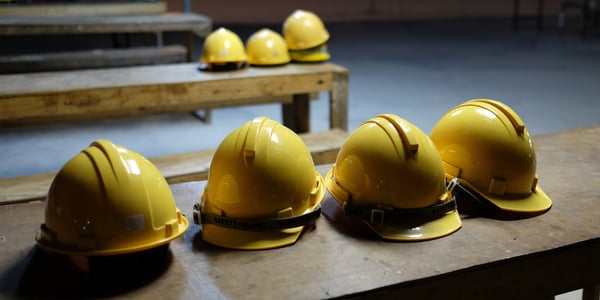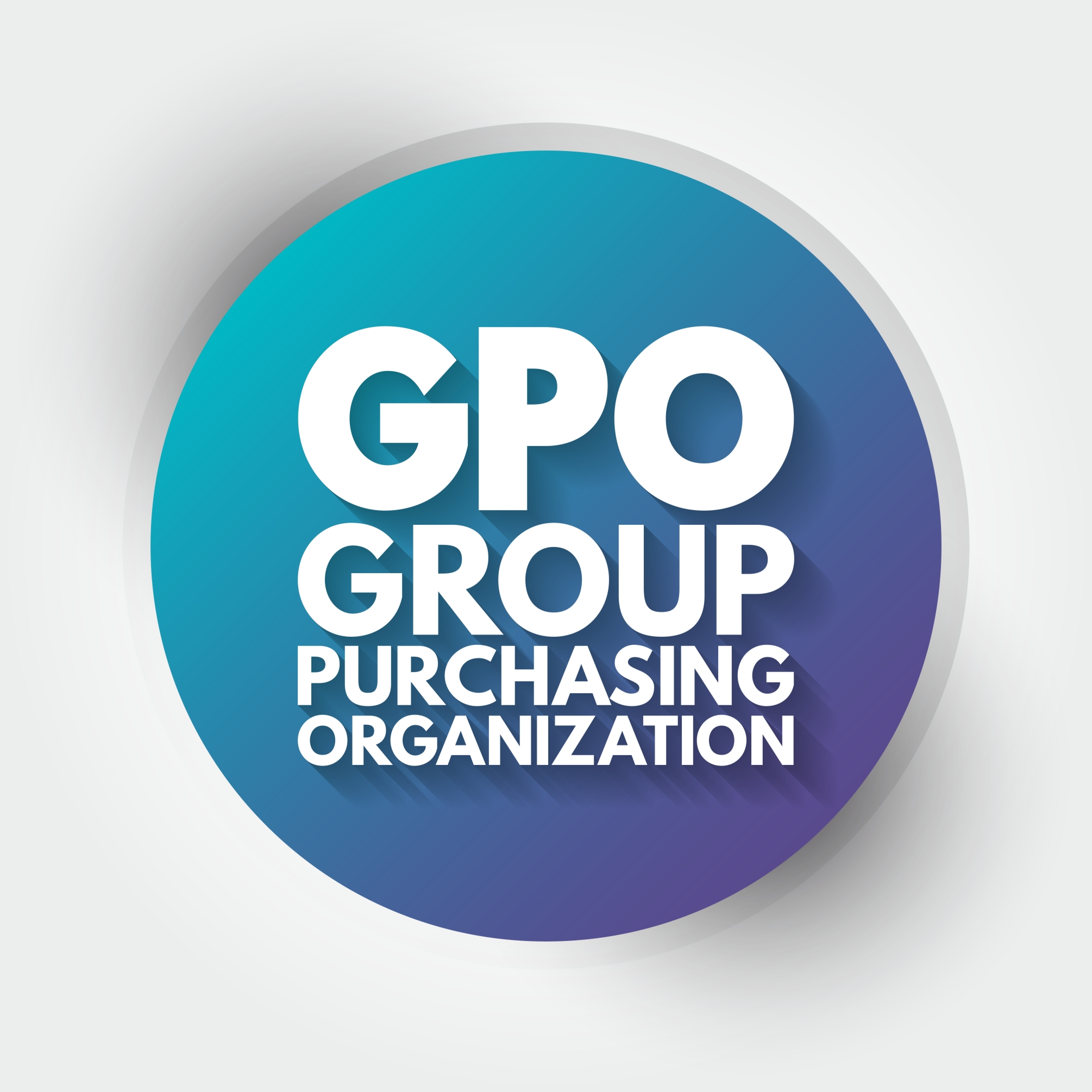Are You Implementing the 5 Essential Green Procurement Best Practices?

Author: Brett Knox
April 25, 2024 - 7 MIN. READ
If you are a commercial electrical or HVAC contractor doing work in city, state or federal government buildings, corporate buildings, hospitals, schools, and universities, you should consider implementing green procurement practices to get ahead of the competition. While not yet required by law in the public sector (except for sales to federal agencies, work on federally funded jobs, or in certain states), green procurement is increasingly required by Fortune 500 companies and investors as part of a strong movement toward Environmental, Social & Governance (ESG) policies.
The more you understand the best practices in green procurement, the more you can stay on top of client demands and provide more value than your competitors.
Since firmly stepping into the global spotlight at the 1992 United Nations Earth Summit in Rio, sustainability and green procurement have become increasingly important. The conference, attended by 117 heads of state and a total of 178 national representatives, declared that sustainable development was feasible and desirable on a global basis.
Since then, the United States has increasingly supported those targets. For example, the Biden administration set a national goal of net zero carbon emissions from federal procurement by 2050, and green procurement has become a requirement for federal agencies. It is also the topic of legislation in California.
There are five critical green best practices in procurement for commercial electrical and HVAC contractors. This article will cover them and guide you through other major aspects of green procurement.
What Is Green Procurement?
Green procurement consists of integrating ESG goals for environmental protection into corporate purchasing. The guiding principle is to buy products and services with the least negative environmental impact. This principle is rooted in the conclusions of the 1992 Rio Conference.
Green procurement is also known as environmentally preferable or sustainable procurement. Considering the life cycle of the products you buy is built into the equation when adopting green best practices in procurement. This includes everything from the original sourcing of raw materials to production, packaging, distribution, maintenance, recycling, and final disposal. This gives it yet another moniker: circular procurement.
Whatever the name, green procurement is relevant to commercial contractors because of the overall environmental impact of the construction and operation of buildings. According to KPMG, a leading global consultancy, 40% of global emissions come from buildings alone, and the EPA found that the production of construction materials contributed 11% of the global total.
Benefits of Adopting Green Procurement Practices
From an environmental perspective, green procurement practices benefit the world’s climate. The Pew Research Center reports that 69% of Americans support taking steps to achieve carbon neutrality by 2050.
As the construction sector moves toward sustainability, there are many economic angles to consider. Energy-efficient transportation provides a clear benefit, as does recycling (if handled correctly). Efficient and proper disposal of waste can avoid compliance penalties. The overriding economic benefit of green best practices in procurement is eligibility for federal (and some state) contracts. Corporations may require sustainable practices due to their ESG goals or investors who demand eco-friendly investment policies.
In its 2023 Global Investors' Intentions Survey, CBRE, a major global real estate company, found that 75% of U.S. respondents have an ESG platform in place. That likely signals increasingly closer attention to sustainable construction practices.
ESG investment has gained momentum, focusing on corporations that score highly on eco-friendly policies. Several major investment funds that routinely invest in U.S. corporations strongly emphasize sustainability. Among them is Black Rock, the world's largest asset manager, with over $17 trillion in assets under management. Another is the California Public Employees’ Retirement System (CalPERS), the nation’s largest pension fund, which also incorporates sustainability deeply into its policies and practices.
The trend is clearly toward green procurement, although universal adoption will undoubtedly be gradual. The outcome of the upcoming presidential election may bear on the transition. If you want to do business with the federal government and avoid a scramble to catch up, it makes sense to learn about and begin to practice green procurement.
The Five Essential Green Best Practices in Procurement
1. Sustainable Product Selection
Sustainable product selection means intentionally selecting products that are minimally harmful or even beneficial to people and the environment throughout their product life cycle. That life cycle begins with the sourcing of raw materials and comprises emissions from production, packaging, distribution, usage, and recycling or disposal. The cost of energy used in all these phases is also considered.
If you haven't already, you may soon find that a corporate customer may dictate the use of eco-friendly products. If you are working on a federally funded project, you must do so. If you perform work in homes too, eco-conscious homeowners are increasingly demanding them. In short, you may have no choice if you want to compete.
Product sustainability certifications like Energy Star hold weight with businesses and consumers, and are required by federal procurement rules. You will encounter these when bidding on green buildings, so it will pay to be savvy.
The best way to select eco-friendly products is to build a solid relationship with your supplier. Ensure that sustainable products are called out in their bids and that they comply with all state, federal, and local regulations.
2. Supplier Selection and Collaboration
As green best practices in procurement become requirements, contractors must find green suppliers, assess their capabilities, and develop collaborative relationships with them. Selecting green products requires solid data on purchased products, and sometimes complex analysis is needed such that contractors must rely on the proven capabilities of suppliers.
You must properly assess your suppliers to ensure you can rely on them to provide sustainable products when needed. They should demonstrate a deep knowledge of sustainability requirements on applicable levels. Ask them about their track record with such projects in your area. Get and follow up on references.
It pays to work with suppliers who can take the lead on sustainability. You do not want sourcing to be a learning experience for both of you.
3. Environmental Impact Assessments
Commercial contractors doing business on federally funded projects will likely need to field Environmental Impact Assessments (EIA) required under the National Environmental Policy Act of 1970. An EIA is a study that determines the environmental impact of a project on the ecosystem, water, soil, and air, and a satisfactory report is required for approval. Ensuring the use of sustainable materials is a crucial aspect of these reports.
4. Compliance with Green Standards
Compliance with accepted green standards, where applicable according to federal or state laws, is essential to your business. The most widely accepted global standard in this space is the Green House Gas (GHG) Protocol.
The GHG Protocol established a global standardized framework for measuring and managing greenhouse gases from public sector operations and product life cycles. It was developed 20 years ago by the World Resource Institute (WRI), a global non-profit research and analytics organization, along with the World Business Council for Sustainable Development (WBCSD). Notably, WBCSD consists of C-suite executives from 225 global companies.
The CHG Protocol sets forth a process called Life Cycle Analysis to evaluate and score carbon emissions from materials. There are three levels of emissions: Levels 1, 2, and 3.
Level 1 emissions result from sources under the direct control of a company. These range from fuels like natural gas used to run equipment (like stoves in a restaurant) to leaking refrigerants from HVAC units. Level 2 emissions are the product of the consumption of externally provided energy, like steam or electricity for heating and cooling.
Level 3 covers any other emissions, including those generated by employee travel, distribution transportation costs, waste management, employee work-at-home utility costs, and many more.
5. Regulatory Environment and Reporting
The process for calculating these emissions is complex, and reporting by corporations is still in the early stages. On the U.S. regulatory front, the Securities and Exchange Commission has just approved a new rule requiring stricter corporate environmental disclosures to investors. The proposed rule has been under consideration since 2022, with some pushback in Congress. It is notable that Level 3 emissions reporting requirements were dropped.
Many corporations voluntarily report emissions data through CDP, formerly the Carbon Disclosure Project. CDP scores and publishes corporate sustainability performance, which is of interest to investors (and others). In 2023, 23,000 companies reported, representing at least two-thirds of global market capitalization, 140% more than in 2020.
We've discussed the importance of integrating environmental impact into procurement decisions. To do so successfully, you will need to know your projects' environmental requirements and be sure to comply with them. Mistakes can be costly and time-consuming.
We've also touched on Life Cycle Analysis. It is a specific process outlined by the GHG Protocol to score carbon emissions from products and materials. There are several methodologies outlined in the protocol to do so. They provide critical information on sustainability scores that can be used to support green procurement.
Since contractors do not generally produce parts and materials, they logically must depend on suppliers to provide this information. That is another key reason for close collaboration with trusted suppliers.
In Closing
In this article, we have covered the five essential green best practices in procurement below.
- Supplier Selection and Collaboration: Choose those with deep sustainability experience.
- Sustainable Product Selection: Work closely with them to pick the right products.
- Environmental Impact Assessments: Know how products are evaluated for GHG impact.
- Compliance with Green Standards: Know and follow applicable standards.
- Regulatory Environment and Reporting
Green procurement is good for the environment, meets customer demands, and may be required by regulations. It makes sense to learn the basics and evaluate your current procurement practices to see if you are equipped to handle future compliance requirements.
At this point, you may conclude that the regulatory environment for sustainability is still evolving in the U.S., afloat in a sea of acronyms. You are correct. As an electrical contractor, you probably don’t look forward to navigating through the change.
Reliable suppliers with green product expertise and experience can be a great source of help. As suppliers, they already need to know their products’ sustainability ratings in depth and must be able to advise you on your choices. Make it a priority to align with suppliers who are sustainability-smart.
Make More Profit on Sustainable Jobs
Purchasing programs like Raiven help contractors make better margins on HVAC and electrical jobs by paying less for equipment, parts, and materials.
Discover the benefits of participating in a premier purchasing program like Raiven. By leveraging the collective buying power of its members, Raiven secures exclusive discounts on automation controls, switchgear, EV charging stations, HVAC equipment, tools, wire, conduit, and more. And there’s no more negotiating with individual suppliers.
Gain access to pre-negotiated discounts of 7%-30% from industry-leading manufacturers and distributors, including Alpscontrols, ChargePoint, Ferguson, Grainger, Graybar, HD Supply, Home Depot, Koch Filters, Lowe’s, Office Depot, Sunbelt Rentals, Schneider Electric, and more! More importantly, many can help you with green procurement and guide you to sustainable products specific to your project requirements.
Contact us today to also learn about how our intuitive purchasing platform streamlines buying for maximum efficiency.



